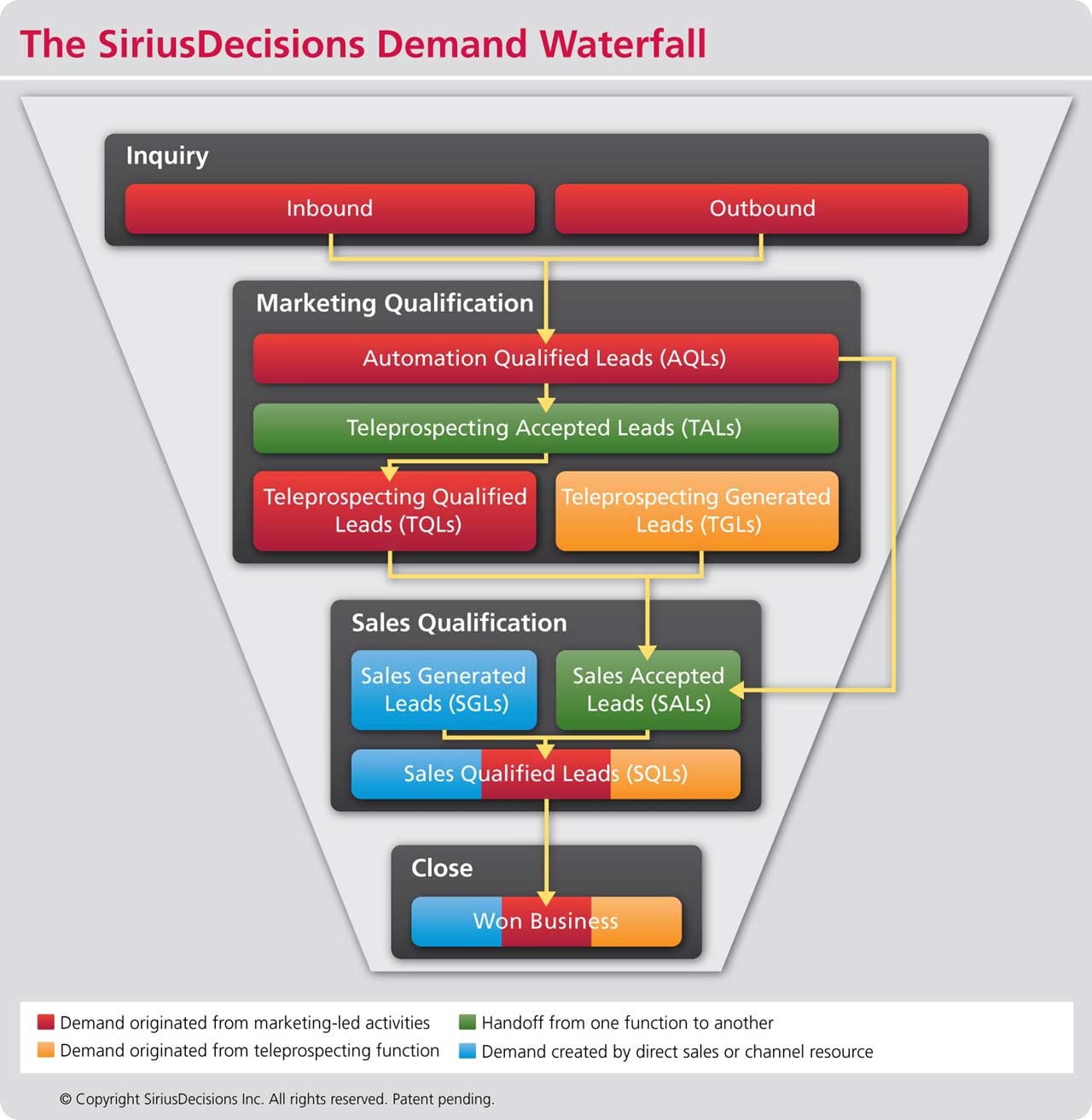In 2012, SiriusDecisions released a new version of its popular "demand waterfall" marketing effectiveness framework. Since 2002, many marketers have used the Sirius-defined processes, and the terminology "Marketing-qualified lead" (MQL) and "Sales-qualified lead" (SQL), to align sales and marketing activity and to track results.
By all accounts, the new demand waterfall graphic and report were very well received, particularly among those who have adopted Sirius's terminology.
So, what was once defined as a tidy "funnel" or a simple "waterfall" is no longer as relevant as it once was. Think, instead, a river fed by many brooks and streams that gracefully come together, only to rush over the edge of the waterfall into the (sometimes) beautiful and tranquil pond below at the last minute.
Although this is no "A River Runs Through It" family drama starring Brad Pitt, the turbulent relationship between the Paul and Norman characters in the movie is not far off from the relationship between Sales and Marketing . The changes from Sirius explicitly address that relationship.
Four Key Changes to the Demand Generation Waterfall Model
The following are the four changes that stood out for me:
- Adding inbound vs. outbound marketing channels. Although both techniques create Marketing leads to be scored, qualified, nurtured, and closed, the close rates from each activity should be measured independently to ensure investments are made appropriately.
- Adding teleprospecting teams. The original demand gen waterfall focused solely on Marketing leads to close business. Because Marketing sometimes has a teleprospecting team that qualifies leads before handing them to Sales, the waterfall framework needed to be updated. The new demand waterfall creates a unique process called "Teleprospecting Accepted Leads" and "Teleprospecting Qualified Leads."
- Adding teleprospecting as a source. Teleprospecting teams often generate their own opportunities from cold-calling or database-mining techniques. A new step called "Teleprospecting Generated Leads" was therefore added to the waterfall marketing framework.
- Formally adding sales activity. Although sales-generated opportunities were assumed to be part of the overall demand generation marketing funnel, they were previously not formally included in the demand waterfall. In many organizations, Sales is assigned goals based on how much business it can develop, and the marketing activity is almost an afterthought. Including sales efforts in the funnel explicitly shows a more complete picture.
Implementing the New Demand Waterfall
So, what do these changes mean to you? Use the following three key actions to put the changes into practice in your organization.
1. Take a holistic approach to your demand funnel management
Looking at your lead sources in silos is no longer good enough. You need to think about deals, cost of deals, and relative efficiencies. If you aren't working with a complete picture, you may make the wrong decisions.
For example, at one company I worked for, Marketing had contributed nearly 80% of the closable pipeline. Good, right? Hardly. Marketing opportunities were taking longer to close, they were smaller deals, and they were less qualified overall, so close rates were lower and distracting.
In a vacuum, you would see the 80% number and double down on marketing activity. Instead, when that activity is measured together with Sales goals and activity, you realize that you would need to restructure the program and reprioritize how Marketing was driving demand in partnership with Sales.
2. Use consistent language
The Sirius framework sets up a process and a language that most everyone can agree on. But even in the gap from MQL to "Sales Accepted Lead" to SQL, we have a great deal of room for interpretation. In my experience, that gray area can be contentious. I recommend that Marketing adopt the language of Sales in those areas to ensure consistency.
Sales likely already has language in place around what counts as a qualified lead or opportunity. Simply adopt that definition and work backward, or negotiate a joint meaning.
If Marketing's definition of SQL (and therefore the mechanism for generating it) is different from that of Sales, you will be doomed. Everyone must be comfortable with the numbers and with what they report.
3. Measure everything—but be clear which metrics matter
To know where to make adjustments, you must look for signals at every level of the Demand Waterfall funnel and you must have baseline and target goals for each area.
At the same time, you need to avoid analysis paralysis. Select two to three key metrics that matter most for your business and track the heck out of them, while using the rest of the metrics to inform plans and gauge internal effectiveness. Assess which metrics are key to your organization, publish both baseline and target goals, and then track them rigorously.
* * *
As with all frameworks, of course, the SiriusDecisions demand generation Waterfall framework is only as good as how you use it.





